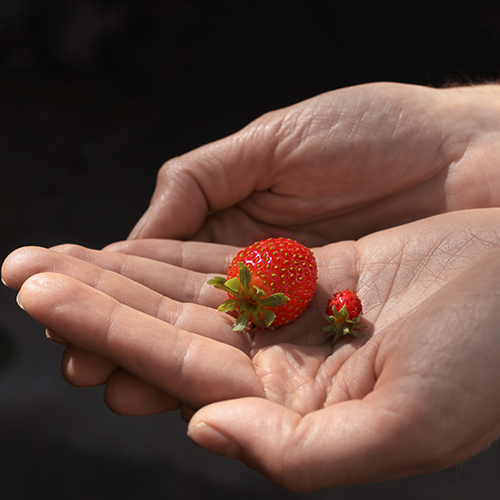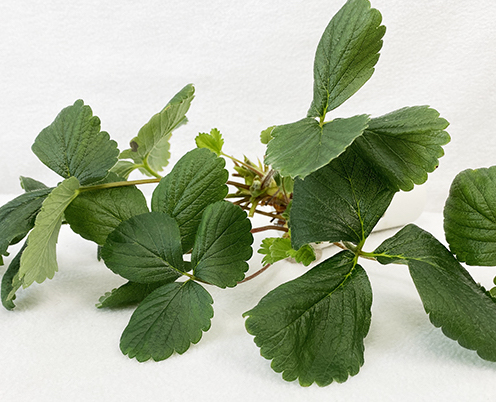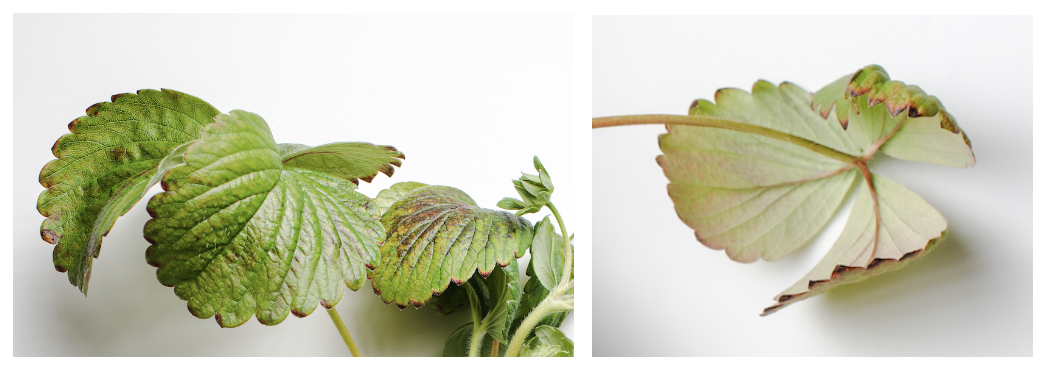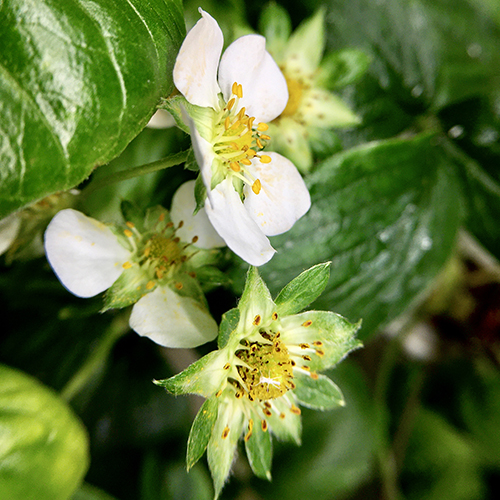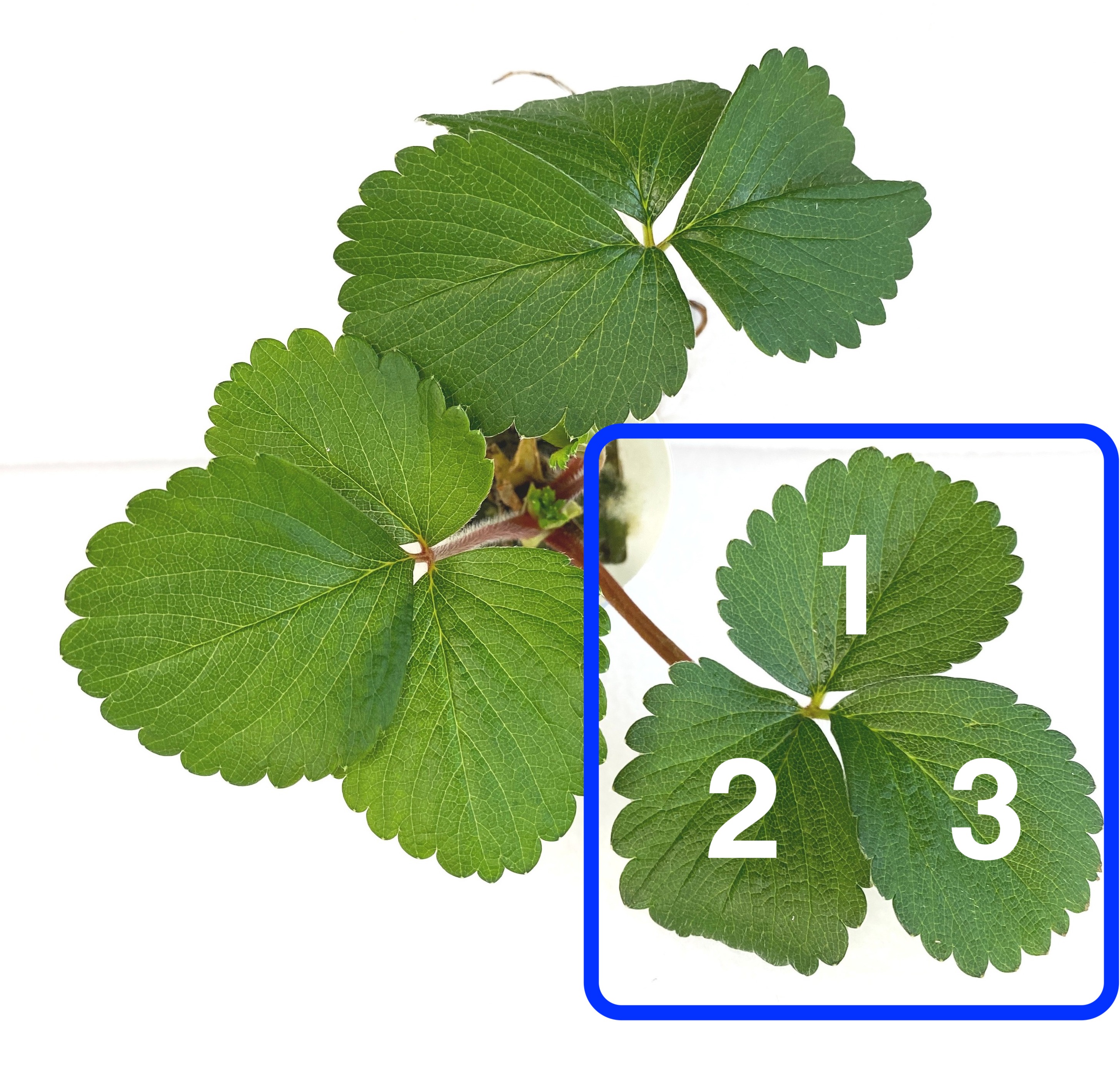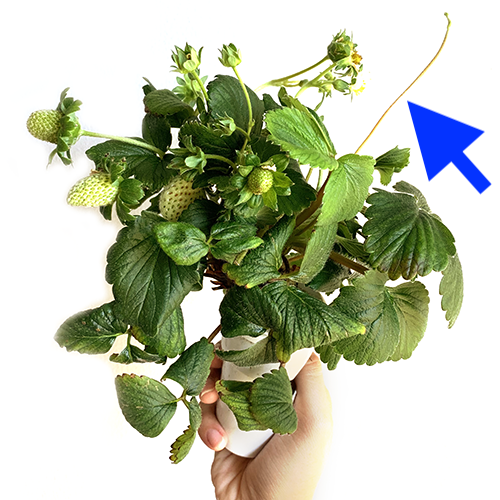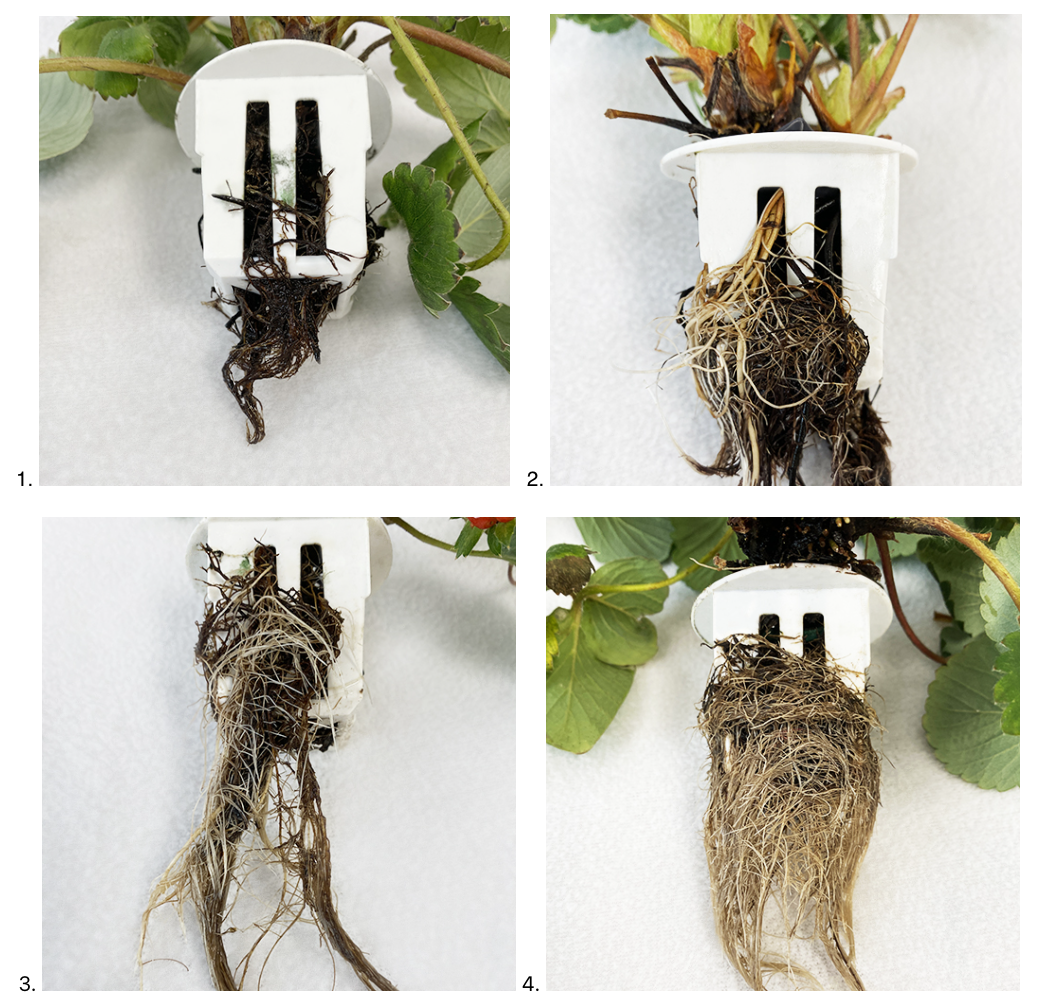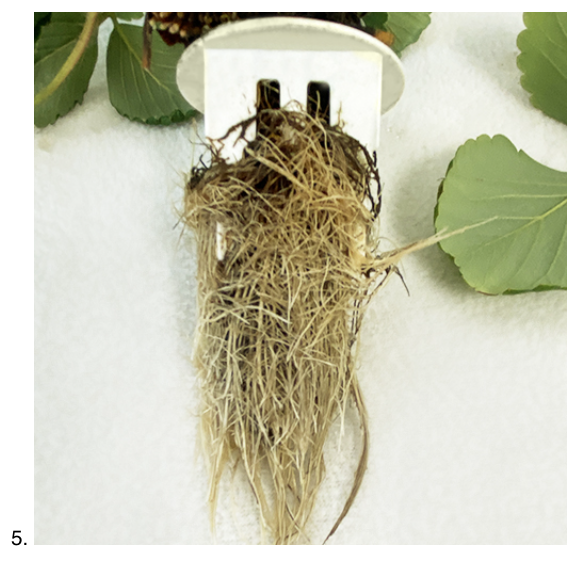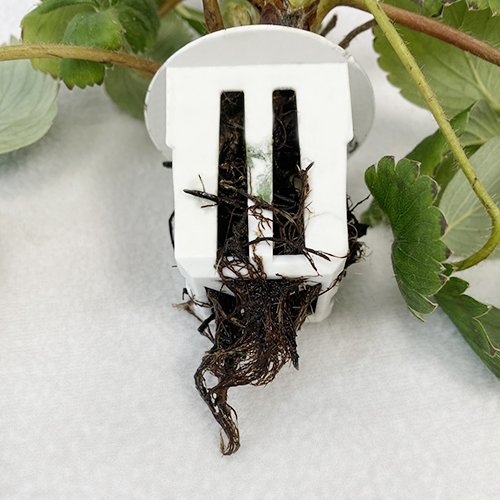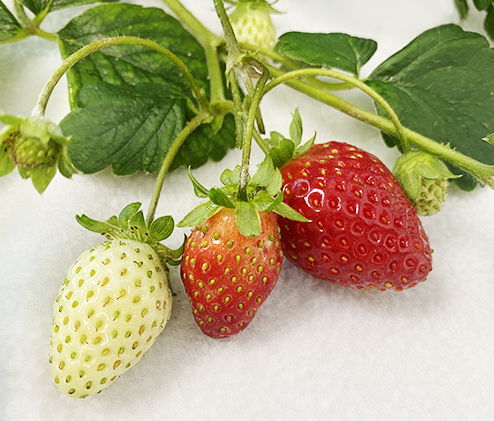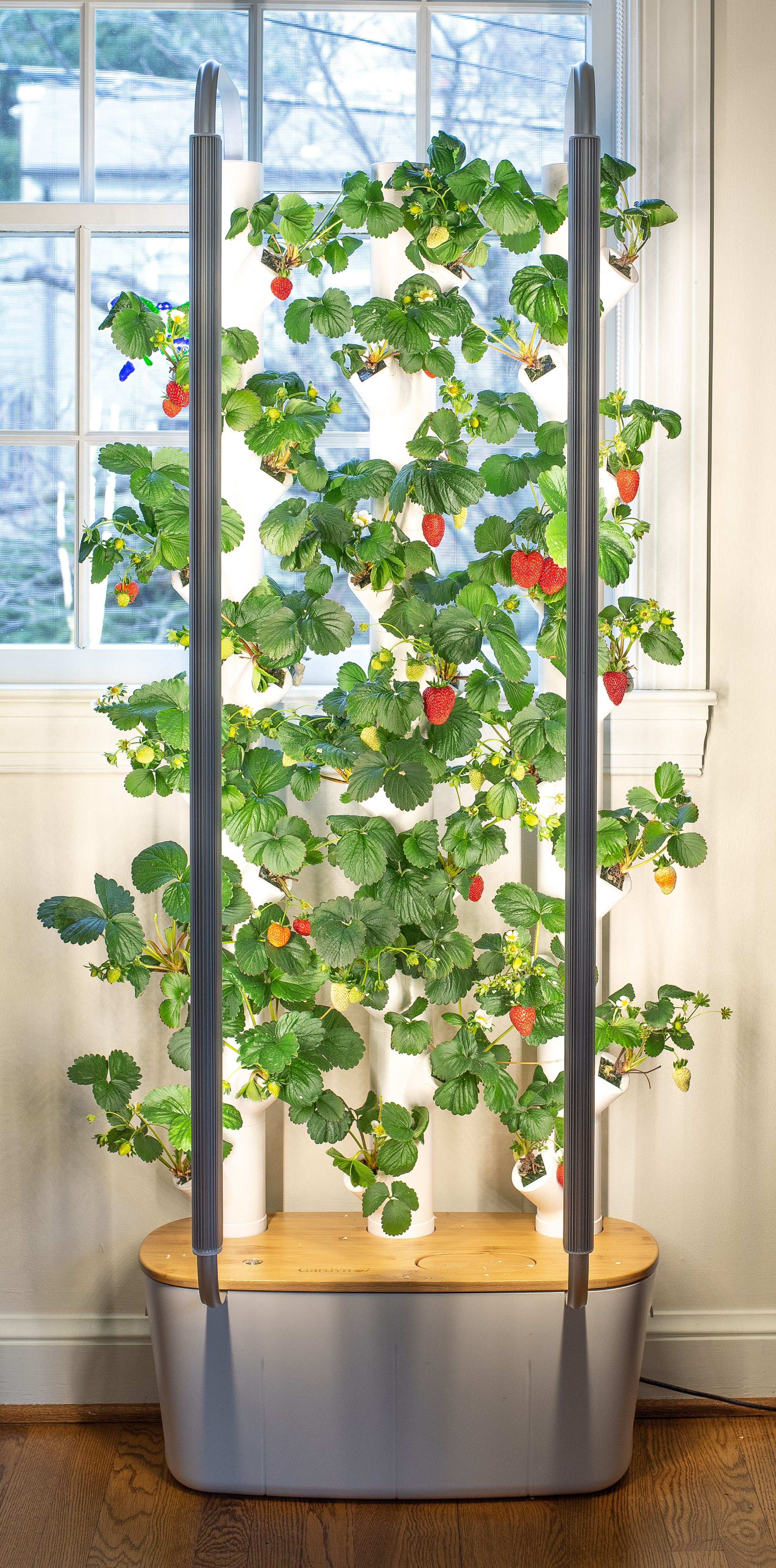Strawberry Care Guide
Whether you're caring for Strawberries that came as bare root plants, or Red or Yellow Mini Strawberries, follow this guide for our tips to growing the healthiest plants and tastiest fruit!
Fruit from a bare root Strawberry (left) and Mini Strawberry (right)
Thinning
Be sure to thin Mini Strawberries to 3 plants per yCube. There's no need to further thin bare root Strawberries, as each yCube arrives with only 1 live plant.
Ideal Growing Environment (both varieties)
Strawberries do best in the center (high light intensity zone) of your Gardyn, but can grow in medium light intensity zones as well. Strawberries do well with temperatures in the 65-85°F range, and they thrive in 60-75% relative humidity.
Watch out for browning on the edges of the leaves, which is a sign their environment is too dry. If you see this, try adding a small humidifier near your Gardyn!
Healthy Strawberry leaves
Strawberry leaves with brown edges
The environment inside your Gardyn matters just as much as the room environment where your Gardyn is located. Strawberries are sensitive plants, especially when they start producing berries. Their root systems are also highly susceptible to root rot. To keep your Strawberries healthy from root to tip, we recommend twice monthly root checks/pruning, and weekly doses of HydroBoost.
Pollination
Strawberries require help with pollination to encourage flowers to form fruit. When the white flowers appear, hold each flower gently between your index and middle fingers. Intentionally swirl the entire flower head 2-3 times with your thumb, ensuring you touch the entire surface.
Strawberry flowers with and without petals
Pollination is an art, and uneven or incomplete pollination can cause your fruit to form funny (though still edible) shapes! Once pollinated, the flower will drop its petals and transform into a berry.
Pruning
Pruning Leaves
Both our bare root and Mini Strawberry varieties are compact, so you should only need to prune leaves if they look unhealthy (yellow/brown/black) or are shading other plants on your Gardyn.
When pruning leaves, note that 1 leaf has 3 lobes, as shown below, so you would prune whole leaves at a time, not individual lobes.
If you do need to prune, ensure you never prune more than ⅓ of the total number of leaves at a time, or your plant may struggle to produce flowers and fruit.
One Strawberry leaf circled with each of its three lobes numbered
Pruning Flowers
Snip off any flowers that appear until the plant has at least 5 fully developed, open leaves.
Note that 1 fully developed Strawberry leaf has 3 lobes, or leaflets, as shown above.
Removing the early flowers encourages the plant to focus its energy on root and foliage development so it can better sustain the fruit later on.
Pruning Runners
Prune away all runners (also called stolons) throughout the plant's entire life cycle.
A Strawberry runner
In nature, Strawberries propagate by producing stolons to help the plant spread. When a runner reaches moist soil, it roots itself and becomes its own plant. On the Gardyn, however, there is nowhere else for the runners to take root, so all they do is take away water and nutrients that the rest of your plant needs. This is why pruning them is key to keeping your Strawberry plant's energy focused on where it needs it most.
Pruning Roots
Prune your Strawberry roots twice a month by trimming away any brown, black, or slimy roots, along with any roots extending past the yPod. Regularly adding HydroBoost to your tank can significantly help with root health (among other benefits!).
Strawberry root rot remediation as a result of weekly HydroBoost additions.
Pests & Diseases
Strawberries are most commonly attacked by aphids, spider mites, and root rot. Start with our pest prevention tips and root care guide to keep issues at bay, then learn how to identify and address pests as needed with our pest-specific guides by clicking on the titles, below.
Aphids
Aphids are greenish, red, black, or peach-colored sucking insects that can spread disease as they feed on the undersides of leaves. Aphids also leave a sticky residue on foliage that attracts ants.
Spider Mites
Adult spider mites are reddish brown or pale in color, oval-shaped, and very small. Affected leaves first show patterns of tiny spots, or stipplings, then may change color, curl, and fall off. Severe spider mite feeding can stunt a plant's growth and can even kill the plant.
Root Rot
Root rot is a condition that occurs from a lack of oxygen around a plant's roots, often due to excessive water, causing the roots to rot. See above for how much HydroBoost can help remediate root rot!
Extensive root rot
Harvest
Bare root Strawberries take 2-3 months to develop fruit, and Mini Strawberries at least 4 months, so patience is key! Once berries form, they can turn red quickly, sometimes over the course of just one day.
Strawberries are ready to pick when each berry is red all the way to the stem. Color, rather than size, indicates ripeness. If you still see white or light red tissue, the berry isn't ready yet! For maximum flavor, give ripe berries an extra day or two to really fill out. They should feel soft to the touch, not firm.
Harvest berries right off the stem by either pinching them off with your fingers, or using a clean pair of scissors to snip berries' individual stems.
Stages of Strawberry ripeness, from unripe (left) to ready to harvest (right)
My second harvest of strawberries look smaller in fruit size - what happened?
There are several factors that could cause this, though some are due to the natural ebbs and flows of the plant's life:
Strawberries follow a cyclical growth, meaning they go through distinct stages of focusing their energy on different aspects of growth (roots, foliage, flowers, fruit, etc.). Depending on where your plant is in this natural cycle, fruit production can be affected.
Stressed plants will grow smaller fruit as a way of preserving their energy. Reduce stress by ensuring your plant has regular access to fresh water and nutrients, is not overcrowded, has the ideal temperature & humidity, and is not fighting any pests or diseases. Use this guide to investigate these critical care factors in more detail.
Poor pollination of flowers can significantly impact the size and shape of your strawberries. Missing even a small portion of the flower head when pollinating can result in creased, lop-sided, small, and malformed fruit. Ensure you're thoroughly reaching every bit of the flower head when pollinating, and aim to pollinate flowers within the first 1-2 days they open.
Strawberry runners divert energy and nutrients away from the main plant, reducing the plant's ability to produce quality, proper-sized fruit. Make sure you are trimming runners away as soon as you see them develop to keep your plant on track with fruit production!
Master Gardyner Tip
With proper root care and regular HydroBoost use, both bare root Strawberries and Mini Strawberries will provide ongoing harvests so you can enjoy their sweet, juicy fruits for 6+ months!
Questions? Reach us at support@mygardyn.com, or chat with us! We're here to help.

